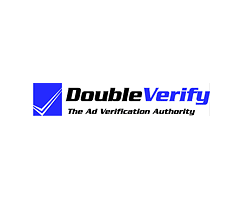 Verification technology company, DoubleVerify, recently announced its BrandShield product which it says “prevents and blocks ads from appearing next to inappropriate content.” Read the release.
Verification technology company, DoubleVerify, recently announced its BrandShield product which it says “prevents and blocks ads from appearing next to inappropriate content.” Read the release.
AdExchanger.com spoke with DoubleVerify CEO Oren Netzer about the verification space and its growing product line.
AdExchanger.com: With the brand safety and verification products of DoubleVerify as well as your competitors, has the balance been tipped with brand marketers who may be more willing to spend online? If not, when?
ON: Keep in mind that the verification space is still brand new. We founded the company in 2008 and we were the pioneers in this space, but we really started seeing significant interest from agencies and marketers only in the past 6 months or so. Verification is now being adopted very quickly by all major agencies and brands. We certainly see many brands that are engaged in verification already and hear many brands that are planning on tacking on verification to anything they buy. There are also more than half a dozen new competitors that came running into the space in the past few months once they’ve seen that significant demands exists. The agencies are also doing their part in evangelizing verification with their clients, with the hopes of getting their clients to spend more online.
There are two key reasons why we are seeing a shift in the mindset and dollars.
The first is the most visible, brand integrity. Obviously no one wants their ad placed around in appropriate content and verification puts and end to this and puts the brands mind at ease (some major brands are very very gunshy). Secondly, online media can and does enable companies to achieve their marketing goals, when the campaign is delivered the way it was intended (right audience, right section, in the US, in the correct DMA, etc…). When it isn’t delivered the way it was intended, the results go well beyond wasted budget, which we see an average of 30% in each campaign we verify. The real devastating results happen when marketing budget decisions are made based on campaign data that isn’t valid – i.e. basing pulling dollars out of online because the last campaign didn’t pull the results the company wanted, although nobody knew that the campaign targeted to the Southeast US, ran in the UK.
AdExchanger.com: In your opinion, do you think publishers should get rid of nested iFrames given the problems with discrepencies for advertisers? Or, are they still a service given third-party ad servers potential to slow down the page load of a site?
ON: I don’t think nested IFRAMES are going to disappear anytime soon. They are an important solution in helping publishers and ad servers protect themselves. Especially with more and more vendors popping up in the measurement, verification, optimization, data and analytics spaces and each of them placing their tags on the ads, publishers need a way to limit the potential security and latency issues arising from these tags. This was a main concern for us when launching BrandShield – make sure our tags are 100% secure and cause no latency to ad load. We are actually the only verification provider that had our tags tested and approved by the leading portals.
AdExchanger.com: Your recent BrandShield announcement seems to go beyond providing visibility into inventory. With DV’s ability to “see through” iFrames, are you getting into ad serving, discrepancy management similar to companies like Ad-Juster?
ON: This space is so new and publishers and marketers are just beginning to understand how to use verification. I think there are a lot of opportunities for us out there and it’s too early to tell how this will play out for us or anyone else.
By John Ebbert











